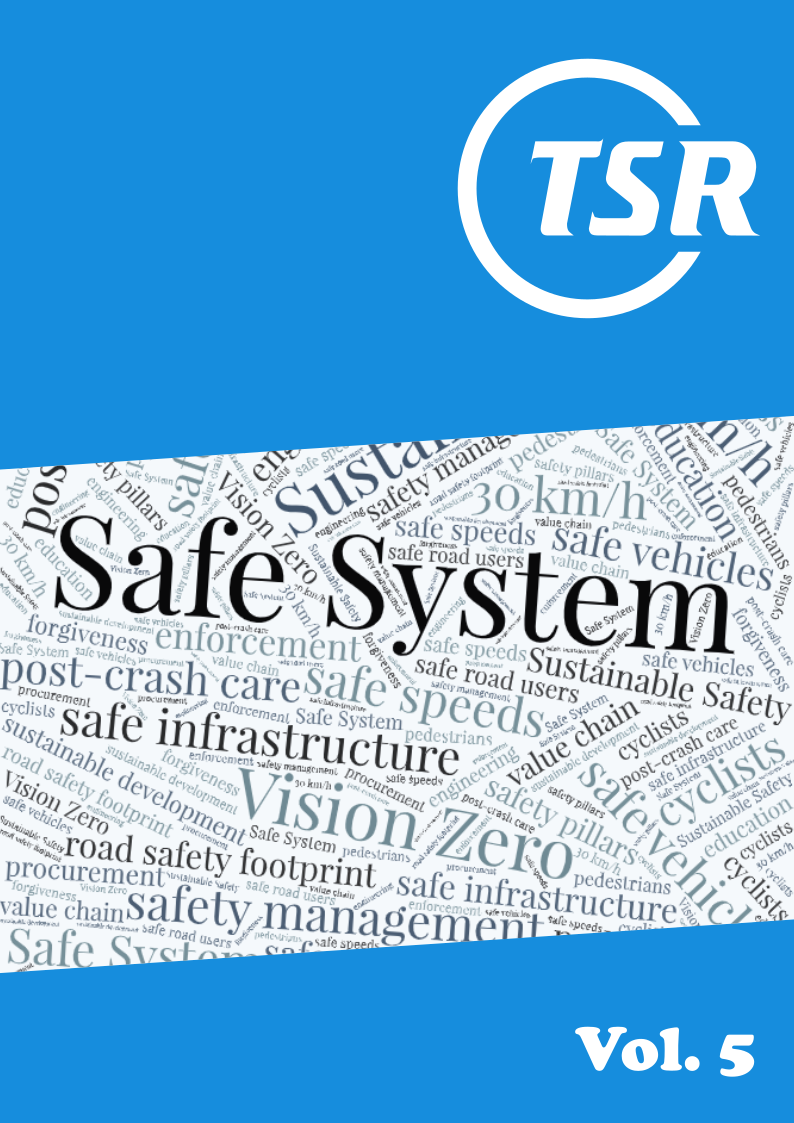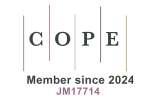Traffic Safe Municipality: a Norwegian approval scheme to facilitate development of a municipal traffic safety culture
DOI:
https://doi.org/10.55329/pbmy3871Keywords:
Safety Management System, Traffic Safe Municipality, Traffic Safety CultureAbstract
This study examines the consequences of being approved as a Traffic Safe Municipality for municipal traffic safety culture, based on surveys (n = 2255) and interviews (n = 17) in 24 municipalities. Traffic Safe Municipality is an approval scheme for Norwegian municipalities, which defines criteria for systematic traffic safety work. Development of a positive municipal traffic safety culture is an explicit aim of the approval scheme. The respondents in the survey state positive consequences for the traffic safety culture in their own workplace after being approved as a Traffic Safe Municipality. The self-reported focus on traffic safety has increased among immediate managers and among colleagues, and it has become easier to address issues related to traffic safety in one's own workplace. In multivariate statistical analyses, we see that these changes are also linked to the respondents stating that they think more about traffic safety in their everyday work and they state that they behave safer in traffic during working hours. The study has also mapped factors that promote or impede implementation of Traffic Safe Municipality. Lack of resources in the municipality, time pressure, high workload and replacement of personnel may hamper implementation, while top managers' involvement throughout the implementation period is one of the most important prerequisites for successful implementation. We conclude that Traffic Safe Municipality can be interpreted as a measure to establish a traffic safety culture through the implementation of a safety management system in the municipality. Such systems are required as a measure to create a positive safety culture in a number of different high-risk sectors (aviation, nuclear power, oil, and gas). Our study is unique, since we apply this perspective in the municipal sector.
Downloads
References
Adjekum, D. K., M. F. Tous (2020), ‘Assessing the relationship between organizational management factors and a resilient safety culture in a collegiate aviation program with Safety Management Systems (SMS)’, Safety Science, 131, 104909. DOI: https://doi.org/10.1016/j.ssci.2020.104909
Ajzen, I. (1991), ‘The theory of planned behaviour’, Organizational Behavior in Human Decision Processes, 50(2), 179–211. DOI: https://doi.org/10.1016/0749-5978(91)90020-T
Amtrak (2015), ‘Safety and security: opportunities exist to improve the Safe-2-Safer program’, Amtrak Office of Inspector General, Audit Report OIG-A-2015-007.
Antonsen, S. (2009), ‘The relationship between culture and safety on offshore supply vessels’, Safety Science, 47(8), 1118–1128. DOI: https://doi.org/10.1016/j.ssci.2008.12.006
Bjørnskau, T., T.-O. Nævestad (2013), ‘Safety culture and safety performance in transport: A literature review’, Institute of Transport Economics (Oslo, Norway), TØI working paper 50267.
Braun, V., V. Clarke (2006), ‘Using thematic analysis in psychology’, Qualitative Research in Psychology, 3(2), 77–101. DOI: https://doi.org/10.1191/1478088706qp063oa
Brinkmann, S., S. Kvale (2014), InterViews: Learning the craft of qualitative research interviewing (Los Angeles, USA: SAGE Publications).
Bye, R. J., A. L. Aalberg (2020), ‘Why do they violate the procedures? - An exploratory study within the maritime transportation industry’, Safety Science, 123, 104538. DOI: https://doi.org/10.1016/j.ssci.2019.104538
Edkins, G. D. (1998), ‘The INDICATE safety program: Evaluation of a method to proactively improve airline safety performance’, Safety Science, 30(3), 275–295. DOI: https://doi.org/10.1016/S0925-7535(98)00049-6
Edwards, J., J. Freeman, D. Soole, B. Watson (2014), ‘A framework for conceptualising traffic safety culture’, Transportation Research Part F: Psychology and Behaviour, 26, 293–302. DOI: https://doi.org/10.1016/j.trf.2014.03.002
Elvik, R., A. Høye, T. Vaa, M. Sørensen (2009), The Handbook of Road Safety Measures (Bingley, UK: Emerald Insight). DOI: https://doi.org/10.1108/9781848552517
ERA (n/d), ‘Safety Management System (SMS)’, European Rail Agency, https://www.era.europa.eu/domains/safety-management/safety-management-system-sms_en, accessed 2023-04-02.
FIA (n/d), ‘FIA Road Safety Index: A New Tool to Improve Road Safety’, https://www.fia.com/sites/default/files/fia_rsi_brochure_cmyk_b5_3mmbleed_v4e.pdf, accessed 2023-03-28.
Fishbein, M., I. Ajzen (1975), Belief, Attitude, Intention, and Behavior: An Introduction to Theory and Research (Reading, MA: Addison-Wesley).
Flin, R., K. Mearns, P. O’Connor, R. Bryden (2000), ‘Measuring safety climate: identifying the common features’, Safety Science, 34, 177–192. DOI: https://doi.org/10.1016/S0925-7535(00)00012-6
Gregersen, N. P., B. Brehmer, B. Morén (1996), ‘Road safety improvement in large companies. An experimental comparison of different measures’, Accident Analysis & Prevention, 28(3), 297–306. DOI: https://doi.org/10.1016/0001-4575(95)00060-7
Hudson, P. (2003), ‘Applying the lessons of high risk industries to health care’, BMJ Quality & Safety, 12, i7– i12. DOI: https://doi.org/10.1136/qhc.12.suppl_1.i7
ICAO (2016), ‘Safety Management’, International Civil Aviation Organisation, Annex 19 to the Convention on International Civil Aviation.
IMO (n/d), ‘Fishing vessel safety’, International Maritime Organization, https://www.imo.org/en/OurWork/Safety/Pages/Fishing%20Vessels-Default.aspx, accessed 2023-04-02.
ISO (2012), ‘Road traffic safety (RTS) management systems— Requirements with guidance for use’, International Organization for Standardization, ISO 39001:2012.
Kongsvik, T., G. Gjøsund (2016), ‘HSE culture in the petroleum industry: Lost in translation’, Safety Science, 81, 81–89. DOI: https://doi.org/10.1016/j.ssci.2015.04.019
Lappalainen, F. J., J. Kuronen, U. Tapaninen (2012), ‘Evaluation of the ISM Code in the Finnish shipping companies’, Journal of Maritime Research, 9(1), 23–32.
Nævestad, T.-O. (2010), ‘Cultures, crises and campaigns: Examining the role of safety culture in the management of hazards in a high-risk industry’, PhD thesis, Centre for Technology, Innovation and Culture, Faculty of Social Sciences, University of Oslo, Norway.
Nævestad, T.-O., A. H. Amundsen, B. Elvebakk, K. Ranestad (2017a), ‘Utvikling av mal for evaluering av Trafikksikker kommune [Development of an evaluation template for the reaccreditation of Traffic-Safe Municipalities]’, Institute of Transport Economics, Oslo, Norway, TØI-rapport 1598/2017.
Nævestad, T.-O., A. H. Amundsen, B. Elvebakk, K. Ranestad (2017b), ‘What are the safety outcomes of “Traffic Safe Municipalities”? Developing and testing a template for evaluation’, 9th International Conference on the Prevention of Accidents at Work, Prague, Czech Republic, 3–6 October 2017.
Nævestad, T.-O., T. Bjørnskau (2012), ‘How can the safety culture perspective be applied to road traffic?’, Transport Reviews, 32, 139–154. DOI: https://doi.org/10.1080/01441647.2011.628131
Nævestad, T.-O., R. Elvik, V. Milch, K. Karlsen, R. O. Phillips (2020), ‘Trafikksikkerhet i busstransport: En analyse av kravene som Ruter stiller til bussoperatørene i kontrakter [Traffic safety in bus transport: An analysis of Ruter’s requirements to bus companies in contracts]’, Institute of Transport Economics (Oslo, Norway), TØI rapport 1787/2020.
Nævestad, T.-O., I. S. Hesjevoll, R. Elvik (2021), ‘How can regulatory authorities improve safety in organizations by influencing safety culture? A conceptual model of the relationships and a discussion of implications’, Accident Analysis & Prevention, 159, 106228. DOI: https://doi.org/10.1016/j.aap.2021.106228
Nævestad, T.-O., I. S. Hesjevoll, R. O. Phillips (2018a), ‘How can we improve safety culture in transport organizations? A review of interventions, effects and influencing factors’, Transportation Research Part F: Psychology and Behaviour, 54, 28–46. DOI: https://doi.org/10.1016/j.trf.2018.01.002
Nævestad, T.-O., V. Milch (2021), ‘Trafikksikker kommune som tiltak for å utvikle kommunal trafikksikkerhetskultur [Traffic safe Municipality as a measure to develop a municipal traffic safety culture]’, Institute of Transport Economics (Oslo: Norway), TØI-rapport 1853/2021.
Nævestad, T.-O., R. O. Phillips, B. Elvebakk (2015), ‘Traffic accidents triggered by drivers at work—a survey and analysis of contributing factors’, Transportation Research Part F: Psychology and Behaviour, 34, 94– 107. DOI: https://doi.org/10.1016/j.trf.2015.07.024
Nævestad, T.-O., K. V. Størkersen, R. O. Phillips (2018b), ‘Procedure Negligence in Coastal Cargo: What Can Be Done to Reduce the Gap between Formal and Informal Aspects of Safety?’, Safety, 4(3), 34. DOI: https://doi.org/10.3390/safety4030034
Naveh, E., T. Katz-Navon (2015), ‘A Longitudinal Study of an Intervention to Improve Road Safety Climate: Climate as an Organizational Boundary Spanner’, Journal of Applied Psychology, 100(1), 216–226. DOI: https://doi.org/10.1037/a0037613
Patankar, M. S. (2019), ‘Maintenance Resource Management for Technical Operations’, in Kanki, B., Anca, J., & Chidester, T. (eds), Crew Resource Management, pp. 357–405. DOI: https://doi.org/10.1016/B978-0-12-812995-1.00013-0
Phillips, R. O., T.-O. Nævestad, G. N. Nordbakke (2018), ‘Increasing the implementation of traffic safety management systems by organisations’, Institute of Transport Economics (Oslo, Norway), TØI report 1664/2018.
Reason, J. (1997), Managing the Risk of Organisational Accidents (Aldershot, UK: Ashgate).
Schein, E. (2004), Organizational Culture and Leadership (San Francisco, CA: Jossey-Bass).
SSB (2018), ‘9 av 10 barnehageansatte er kvinner’, Statistics Norway, https://www.ssb.no/utdanning/artikler-og-publikasjoner/9-av-10-barnehageansatte-er-kvinner, accessed 2023-04-01.
Stockholm_Declaration (2020), ‘Achieving Global Goals 2030’, Third Global Ministerial Conference on Road Safety.
Størkersen, K., T. Thorvaldsen, T. Kongsvik, S. Dekker (2020), ‘How deregulation can become overregulation: An empirical study into the growth of internal bureaucracy when governments take a step back’, Safety Science, 128, 104772. DOI: https://doi.org/10.1016/j.ssci.2020.104772
Thomas, M. J. W. (2012), ‘A Systematic Review of the Effectiveness of Safety Management Systems’, Australian Transport Safety Bureau, XR-2011-002.
Tingvall, C. (2021), ‘Current trends in traffic safety—the need for crossing the borders of disciplines’, Traffic Safety Research, 1, 000001. DOI: https://doi.org/10.55329/pvkj7520
Ward, N. J., J. Linkenbach, S. N. Keller, J. Otto (2010), ‘White Paper on Traffic Safety Culture’, Montana State University (Bozeman, MT, USA), White papers for ‘Toward Zero Deaths: A National Strategy on Highway Safety’.
WHO (2022), ‘Road traffic injuries’, World Health Organization, https://www.who.int/news-room/fact-sheets/detail/road-traffic-injuries, accessed 2023-03-28.
Wouters, P. I. J., J. M. J. Bos (2000), ‘Traffic accident reduction by monitoring driver behaviour with in-car data recorders’, Accident Analysis & Prevention, 32(5), 643–650. DOI: https://doi.org/10.1016/S0001-4575(99)00095-0
Zuschlag, M., J. M. Ranney, M. Coplen (2016), ‘Evaluation of a safety culture intervention for Union Pacific show improved safety and safety culture’, Safety Science, 83, 59–73. DOI: https://doi.org/10.1016/j.ssci.2015.10.001
Published
How to Cite
Issue
Section
License
Copyright (c) 2023 Tor-Olav Nævestad, Vibeke Milch

This work is licensed under a Creative Commons Attribution 4.0 International License.









